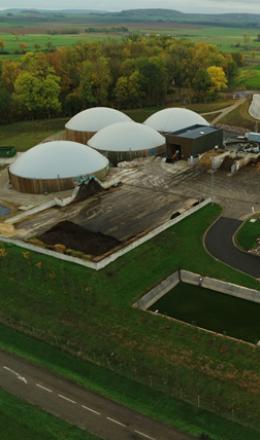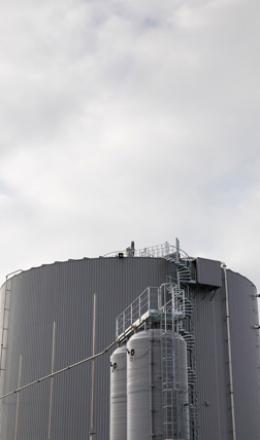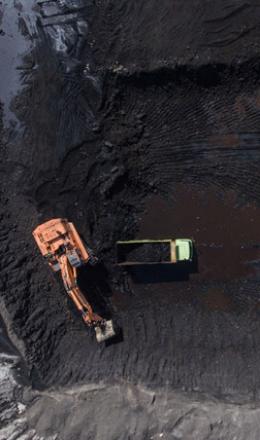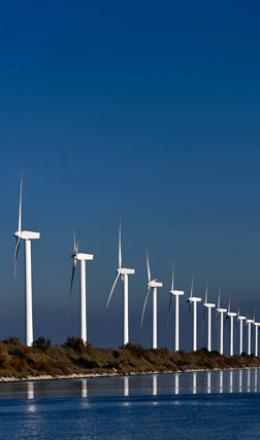Benefits & the A to Z of renewable gases
Benefits
The A to Z of renewable gases
Anaerobic
An anaerobic environment is characterised by the absence of oxygen (O2). An anaerobic organism or mechanism does not need air or oxygen to function. For example, a digester produces biogas anaerobically.
Anaerobic digestion
A natural biological process of decomposing organic matter in the absence of oxygen.
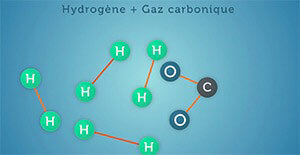
Biofuels
Alternative fuels produced from non-fossil and renewable organic materials.
Biogas
Gas produced by the fermentation of organic matter in the absence of oxygen. It can be burned at its place of production to obtain heat and electricity or it can be purified to obtain biomethane which is then injected into the gas networks.
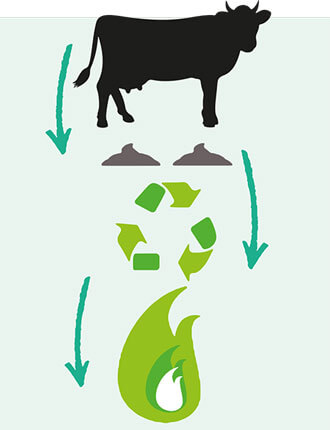
Biomass
A term that covers all forms of energy produced from several types of waste (solids, liquids, organic, etc.).
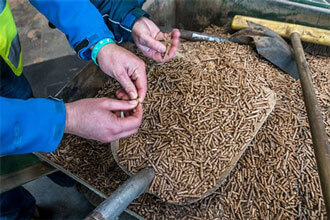
Biomethane
A methane-rich gas obtained by biogas upgrading, which is produced by the fermentation of organic matter.
Carbon
A chemical element (C) that is very widespread in nature either in its pure state (diamond, graphite) or most often it is combined with other bodies (carbon dioxide from the air, coal, oil, etc.).
Circular economy
An approach aimed at limiting the waste of resources and the environmental impact by creating local circles, but also by increasing efficiency at all stages of the product economy.
CO2
The chemical formula for carbon dioxide. Carbon dioxide (CO2) in its natural state is the main greenhouse gas, along with water vapour. It is produced when carbon compounds are burned and exposed to oxygen.
Cogeneration
A technology that simultaneously produces heat and electricity from natural or renewable gas. Heat which can be used for domestic heating or hot water. Electricity produced can be consumed on site or resold to supply the electricity network
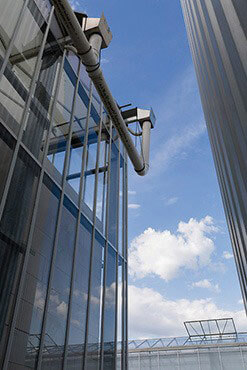
Crit’air
French air quality certificate indicating the environmental class of vehicles. There are 6 categories, from the most polluting (6) to the least polluting (1). NGV and bioNGV vehicles are classified as Crit’Air 1 and are permitted to travel during pollution peaks.
Decarbonise
To reduce or eliminate carbon dioxide emissions from a production process.
Digestate
A solid and liquid residue generated by the anaerobic digestion process.
Digester
A chemical reactor in which waste that has a high organic matter content is fermented. It is a gas-tight, thermally insulated cylindrical vessel.
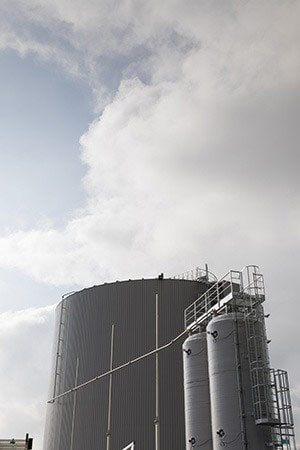
Dioxygen
The form of oxygen found in air. It is a molecule made up of two oxygen atoms bonded together (O2).
Distribution networks
Distribution networks transport gas from the transmission networks to the end consumers (individuals, businesses, etc.).
Electrolysis
A method that uses electricity to cause a chemical reaction. This is the process used by Power-to-Gas to transform electricity from renewable sources into hydrogen.
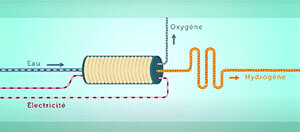
Energy mix
The energy mix represents the distribution and weighting of the different energy sources that are necessary to meet the needs of a given country.
Energy transition
This refers to a profound structural change in the way we produce and consume energy. It is one part of the ecological transition.
Euro VI
A European standard aimed at limiting the emission of pollutants by heavy vehicles. Compared to the Euro V standard, the Euro VI standard imposes an additional reduction of 80% in emission limit values for NOx (nitrogen oxides), 50% for particles and more than 70% for hydrocarbons.
Fermentable matter
This refers to waste composed exclusively of biodegradable organic matter. It can be treated using composting or anaerobic digestion.
Fossil energies
Energies originating from the sedimentation of organic matter buried below ground (oil, coal, and natural gas).
Gas storage
Before being transported to the consumer, gas passes through storage sites near deposits or consumption areas. Gas storage enables the expectations of producers (delivery of stable volumes) and consumer (continuous supply) to be met.
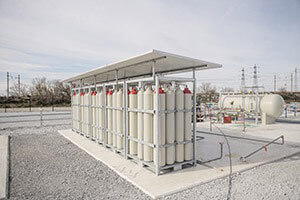
GHG Emissions
Greenhouse gas emissions (abbreviation).
Hydrogen
The H2 molecule of dihydrogen, made up of two hydrogen atoms, it is also commonly called hydrogen. This molecule is used for chemical purposes and is valuable for energy purposes, both because it of its possibilities for use and storage and its decarbonisation capacity.
Hydrothermal gasification
A high-pressure, high-temperature thermochemical process to convert liquid biomass with low levels of dry matter into a methane-rich synthetic gas that, after purification, can be injected into the gas networks.
Inputs
All products processed by the various renewable gas production processes (Anaerobic digestion, pyrogasification, hydrothermal gasification).
Intermediate Energy Crops
Intermediate energy crops are crops planted and harvested between two main crops, as part of an established rotation, and without competing with agricultural crops for food production.
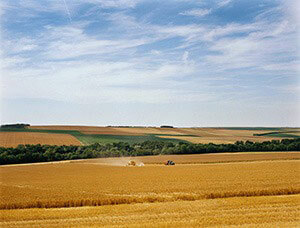
Joule
The unit of measurement (J) of work, energy, and quantity of heat. One watt hour is equivalent to 3,600 joules.
Kilowatt hour (kWh)
The kWh (kilowatt hour) is the traditional unit of measurement of the energy produced and consumed. It corresponds to giving off 1 kW of power for 1 hour.
Land use planning
A policy consisting of seeking the best distribution of economic activities, within the national geographical boundaries, according to the availability of natural and human resources.
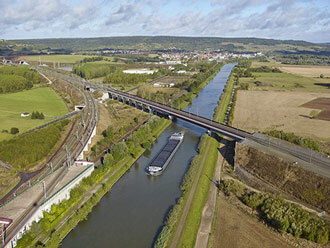
Liquid waste
Waste recovered by hydrothermal gasification (conversion of wet biomass). The following materials are eligible for this process: sewage sludge, anaerobic digestion, livestock effluent and other agricultural residues, residues from agri-food industries, industrial organic effluents, and urban organic waste.
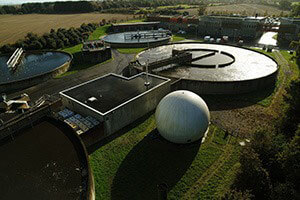
Livestock effluent
Substances derived from livestock farming, mainly composed of slurry and manure.
LNG terminals
Facilities for regasification of liquefied natural gas (LNG) that is shipped by sea from production areas.
Natural gas
A fossil fuel consisting of a mixture of gaseous hydrocarbons, which has methane as one of its main components. This hydrocarbon is less polluting and less rich in CO2 than other hydrocarbons (coal, oil).
NGV (Natural Gas for Vehicles)
A natural gas that is used as a fuel. It comes in two forms: compressed (CNG) or liquid (LNG). NGV emits almost no fine particles (-95%) and half the NOx that is stipulated in the Euro VI standard.
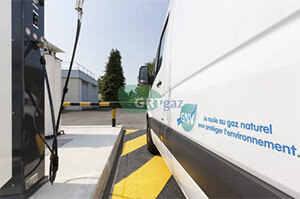
NHWSF
A non-hazardous waste storage facility (NHWSF) that disposes of non-hazardous waste by depositing or burying it on or in the ground.
Nitrogen
A simple gaseous body (N2), making up approximately 80% of the composition of air.
NOx
The chemical formula for the particularly polluting nitrogen oxides. Nitrous oxide (N2O) is one example, it is a powerful greenhouse gas.
Opérator
In relation to gas infrastructure, this refers to a company responsible for the operation of the relevant infrastructure (networks, storage, LNG terminals).
Organic waste
Residues of plant or animal origin that can be broken down by micro-organisms for which they represent a food source.
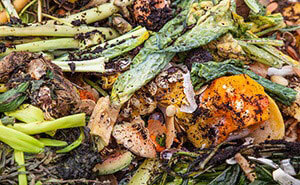
Particle or PM
Particulate matter (PM) is particles that are suspended in the Earth's atmosphere. A high level of fine and ultra-fine particles in the air poses a health risk and is a contributing factor to pollution. PM is generally now classified as carcinogenic to humans and inhaling it causes or aggravates various cardiovascular disorders.
Power-to-Gas
A process of transforming renewable electricity into hydrogen via electrolysis and then possibly methane via methanation.
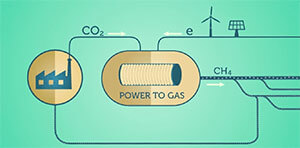
PPE
The Multi-Annual Energy Programme sets out the France’s action guidelines and priorities in terms of its national energy policy.
Purification
The removal of impurities contained in a product.
Pyrogasification
A high-temperature thermochemical process used to recover various solid and residual waste to produce a gas that can be injected into existing gas networks.
Recycling
A set of techniques aimed at recovering waste and reintroducing it into the production cycle from which it originates.
Renewable energies
A set of diversified sectors (characterised by their physical, chemical, or biological mechanisms) that when implemented do not cause the depletion of the initial resource.
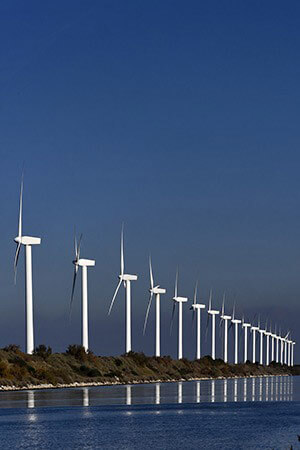
Renewable gas
A gas obtained by recovering various materials (organic, solid, liquid, etc.). It is different from natural gas, a fossil resource that has existed underground for several million years.
Reverse flows
An action that consists of directing the surplus biomethane from the downstream distribution network to the upstream transmission network. This makes the flow bidirectional. The reverse flow supports national distribution between biomethane production and consumption.
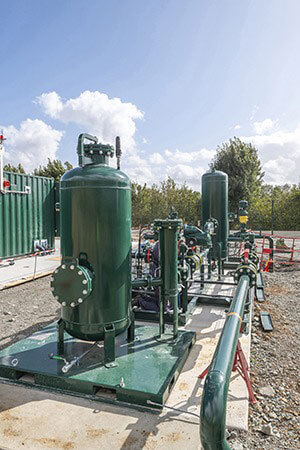
Sludge
Organic or mineral residues in solid, liquid or paste form. Dried sludge comes from purification devices and its dry matter content is then greater than 95%
Smartgrid
A grid formed by the energy networks that is integrated with information and communication technologies (ICT) making it possible to maximise the share of renewable energies in energy consumption and to manage infrastructure in real time using a decentralised system.
SNBC
The National Low Carbon Strategy is France's roadmap to tackle climate change. It provides guidelines, for all business sectors, to transition to a low-carbon, circular and sustainable economy.
Solid Recovered Fuels (SCR)
Fuels produced from non-hazardous waste that cannot be sorted and recycled. These can be recovered as renewable gases thanks to the pyrogasification technique in particular.
Solid waste
Dry inputs that cannot be methanised, that can be recovered to produce energy using pyrogasification. Examples include wood, other dry woody materials and biomass resources with waste/non-waste status, other waste such as solid recovered fuels, used tyres, etc.
Spreading
The action of spreading seeds, fertilisers, and phytosanitary products on soil or on crops.
Transmission
Management of gas at one or more points and the simultaneous return of gas quantities of the same energy value at one or more other points, by means of one or more transmission or distribution networks. Transmission is carried out by transmission system operators (carriers) and/or distribution system operators (distributors).
Transmission networks
The transmission networks link the various national and regional interconnection points in France and directly supply large industrial sites, storage sites and distribution networks.
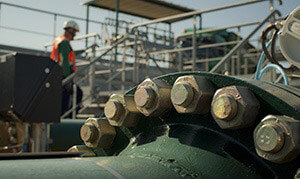
TSO
Transmission System Operator. In France, for gas, this term refers to GRTgaz and Teréga.
TWh
Terawatt hour, or 1 billion kWh.
Watt
The unit of energy power, the quantity of energy consumed each second (1 watt = 1 Joule per second).

